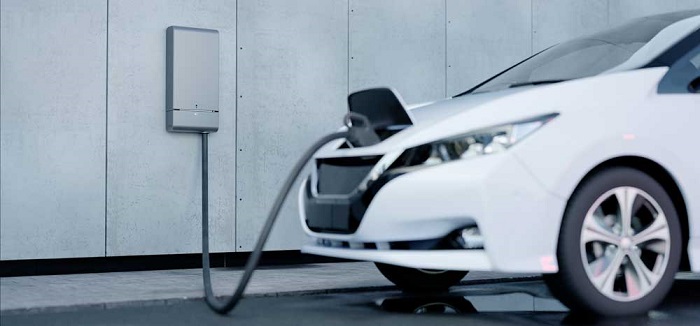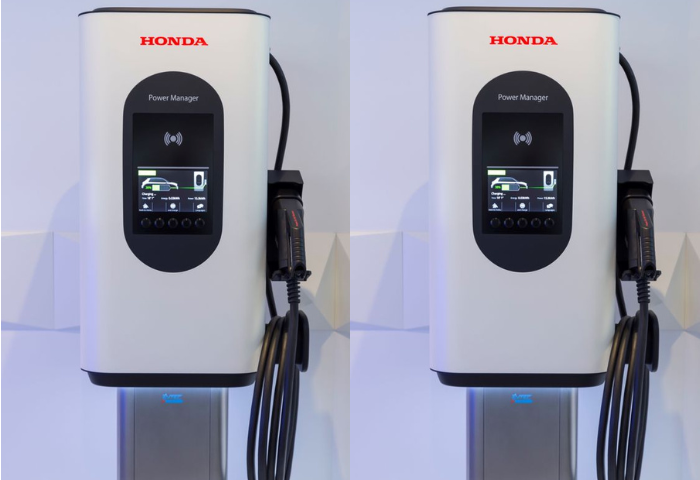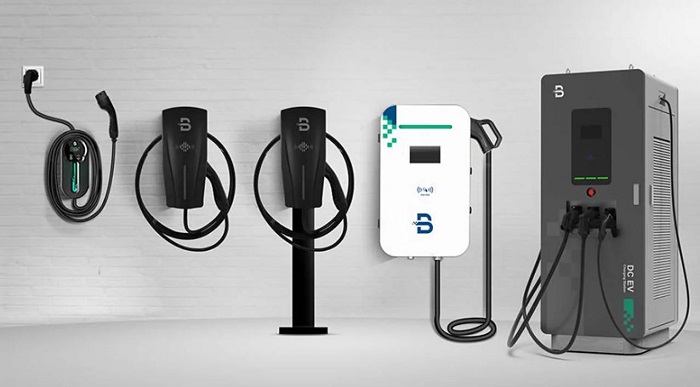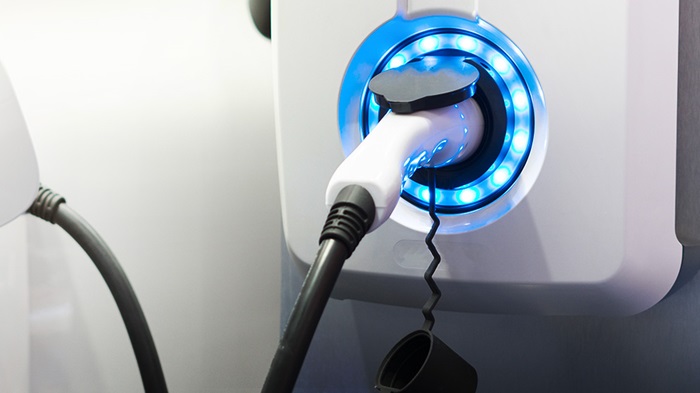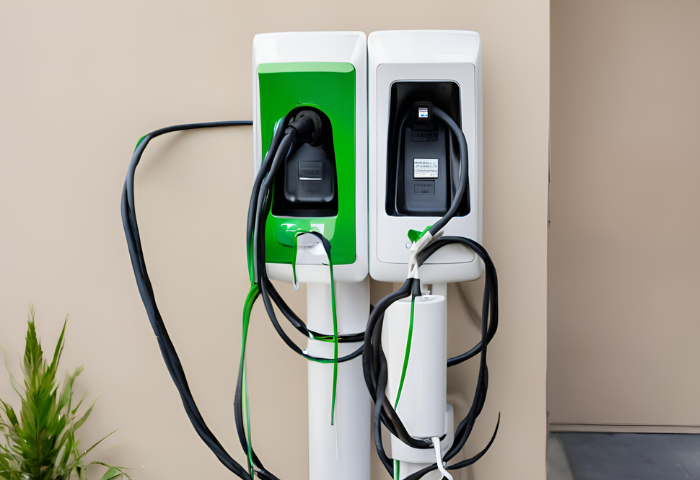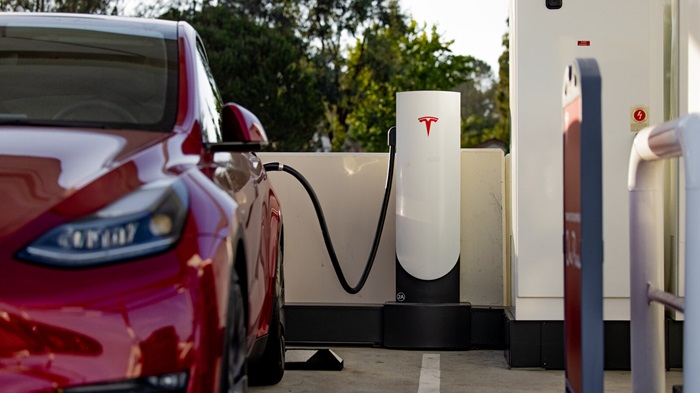What’s the best portable level 1 EV charger
When it comes to portable Level 1 electric vehicle (EV) chargers, finding the best option can significantly enhance the convenience and flexibility of EV ownership.
Portable Level 1 chargers are compact and versatile charging solutions designed for EV owners who are frequently on the go or have limited access to home charging infrastructure. Let’s delve into what makes a great portable Level 1 EV charger.
1. Understanding Level 1 Chargers
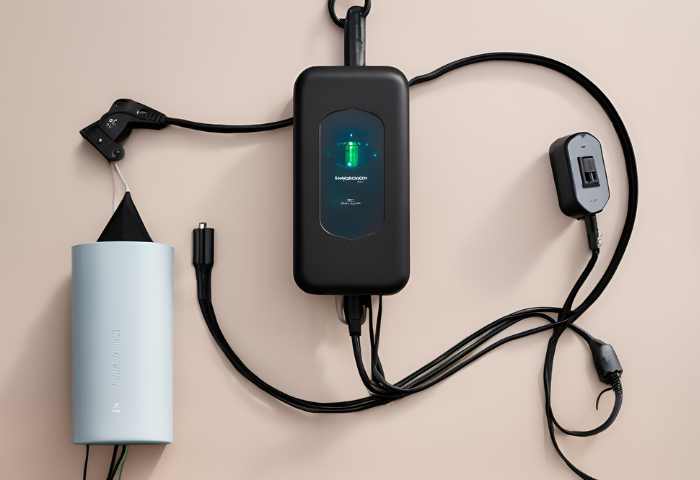
1.1 What are Level 1 EV Chargers?
Level 1 electric vehicle (EV) chargers are basic charging devices designed for residential use. They provide a simple and accessible way to charge EVs using standard 120-volt household outlets. Level 1 chargers typically come with a charging cable that connects to the EV’s charging port on one end and plugs into a standard household outlet on the other.
These chargers convert alternating current (AC) from the household outlet into direct current (DC) suitable for charging the EV’s battery. While Level 1 chargers offer slower charging speeds compared to higher-level chargers, they are suitable for overnight charging or topping up the battery during downtime.
Overall, Level 1 chargers provide a convenient and accessible charging solution for residential EV owners, allowing them to charge their vehicles using existing household outlets without the need for additional infrastructure or installations.
1.2 Advantages of Level 1 Chargers
The advantages of Level 1 chargers stem from their convenience, affordability, and wide availability, making them a popular choice for residential electric vehicle (EV) charging. Here are some key advantages:
Convenience: Level 1 chargers offer unmatched convenience for EV owners, as they can be plugged into any standard 120-volt household outlet. This means that EV owners can charge their vehicles at home using existing electrical infrastructure without the need for specialized charging stations or installations. The simplicity of Level 1 charging makes it easy for EV owners to incorporate charging into their daily routines, such as overnight charging in the garage or during downtime.
Affordability: Level 1 chargers are the most affordable charging option for EV owners, both in terms of equipment cost and installation. Since they utilize standard household outlets, there are no additional infrastructure or electrical upgrades required, minimizing upfront costs. This affordability makes Level 1 chargers accessible to a wide range of EV owners, including those on a tight budget or renting their living space.
Wide Availability: One of the key advantages of Level 1 chargers is their wide availability. Standard 120-volt household outlets are ubiquitous in homes, workplaces, and public spaces, providing EV owners with ample charging opportunities wherever they go. This widespread availability ensures that EV owners can charge their vehicles conveniently, even when away from home or traveling to locations without dedicated charging infrastructure.
2. Choosing the Best Portable Level 1 EV Charger
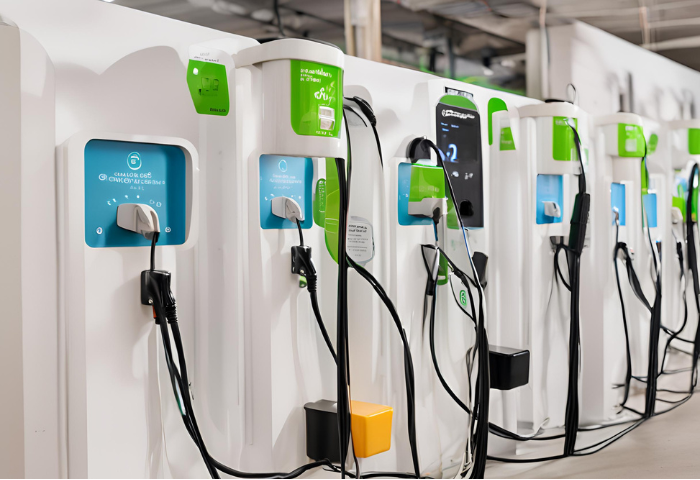
2.1 Charging Speed and Efficiency
When considering electric vehicle (EV) charging solutions, charging speed and efficiency are crucial factors to prioritize. Here are key features to consider in relation to charging speed and efficiency:
Charging Speed: The charging speed determines how quickly your EV’s battery can be replenished. Faster charging speeds reduce the time required for charging sessions, providing greater convenience and flexibility for EV owners. Look for charging solutions, such as Level 2 chargers or DC fast chargers, that offer higher power outputs and faster charging rates to minimize downtime and maximize driving range.
Power Output: Pay attention to the power output of the charging equipment, measured in kilowatts (kW). Higher power output results in faster charging speeds, allowing EV owners to charge their vehicles more quickly. Consider charging solutions with adjustable power settings or dynamic charging capabilities that optimize charging speed based on battery state of charge, energy demand, or grid conditions.
Efficiency Features: Look for efficiency features that optimize the charging process and minimize energy consumption. This may include smart charging algorithms, power management systems, or energy-saving modes that reduce standby power consumption when the charger is not in use. Efficiency features help maximize the utilization of available power resources and reduce the environmental impact of EV charging.
Temperature Management: Consider charging solutions with built-in temperature management systems that monitor and regulate the temperature of the charging equipment and battery during charging. Proper temperature management helps maintain optimal charging performance and prolongs the lifespan of the battery by preventing overheating or overcooling.
User Interface: Evaluate the user interface of the charging equipment, including display screens, control panels, and mobile apps. A user-friendly interface provides real-time feedback on charging status, energy consumption, and charging history, allowing EV owners to monitor and manage their charging sessions effectively. Look for intuitive controls, informative dashboards, and remote monitoring capabilities for enhanced user experience.
2.2 Portability and Compact Design
When selecting electric vehicle (EV) charging solutions, portability and compact design are essential considerations for ease of transport and versatility. Here’s why size and weight matter:
Convenience: Portability allows EV owners to take their charging equipment wherever they go, providing flexibility and convenience for charging on the go. Compact and lightweight chargers can be easily stored in the trunk of a car, carried in a backpack, or transported during travel, ensuring EV owners always have access to a reliable charging solution wherever they go.
Versatility: Portable chargers with compact designs are versatile and can be used in various settings, including at home, work, public charging stations, or while traveling. Their small footprint and lightweight construction make them suitable for use in tight spaces or locations with limited access to charging infrastructure, providing EV owners with greater flexibility and accessibility for charging their vehicles.
Ease of Installation: Compact chargers are easy to install and set up, requiring minimal space and infrastructure. They can be plugged into standard electrical outlets without the need for specialized installations or electrical upgrades, making them ideal for residential charging or temporary charging solutions in rental properties, apartments, or condominiums.
Portability for Emergency Situations: In emergency situations, such as power outages or natural disasters, portable chargers offer a reliable backup charging solution for EV owners. Their compact size and lightweight design make them easy to transport to alternative charging locations or emergency shelters, ensuring EV owners can maintain access to essential transportation services during challenging circumstances.
2.3 Compatibility with Electric Vehicles
When considering electric vehicle (EV) charging solutions, compatibility is paramount to ensure seamless charging experiences. Here’s why compatibility with the J1772 standard and specific EV models is crucial:
J1772 Standard Compatibility: For Level 1 and Level 2 charging, the majority of EV manufacturers use the J1772 standard as their preferred charging connector standard. Chargers that adhere to the J1772 standard ensure compatibility with a wide range of EVs, allowing EV owners to charge their vehicles using standard charging equipment regardless of the make or model.
Universal Compatibility: Chargers compliant with the J1772 standard offer universal compatibility with EVs from various manufacturers, including popular brands like Tesla, Nissan, Chevrolet, BMW, and others. This universal compatibility ensures that EV owners can confidently use J1772-compatible chargers without concerns about plug compatibility or charging standards.
Specific EV Model Compatibility: While most EVs are compatible with J1772-standard chargers, it’s essential to verify compatibility with your specific EV model to ensure seamless charging experiences. EV manufacturers may provide guidelines, recommendations, or compatibility lists indicating which charging equipment is compatible with their EV models.
Checking Compatibility: To check compatibility with your specific EV model, refer to the owner’s manual, documentation, or official website of the EV manufacturer. Look for information about compatible charging equipment, plug types, and charging standards recommended for your EV model. Additionally, EV owners can consult online forums, user communities, or EV charging directories for insights and recommendations from fellow EV owners regarding compatible charging solutions.
3. Portable Level 1 Chargers vs. Other Options
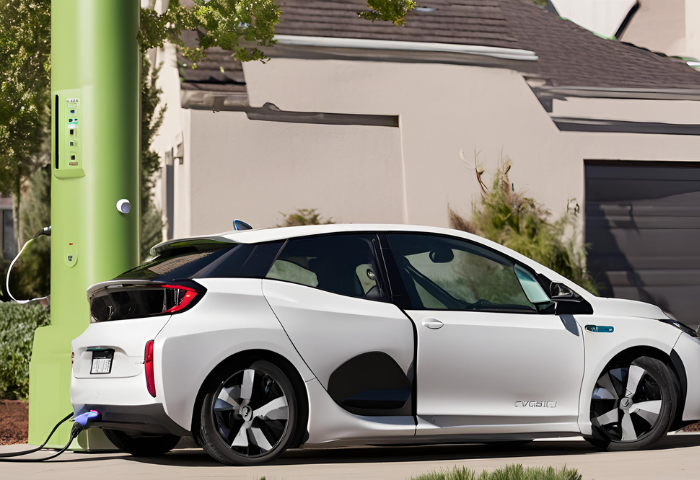
3.1 Comparison with Level 2 Chargers
When comparing Level 1 chargers to Level 2 chargers, one significant difference is charging speed. Level 2 chargers offer significantly faster charging speeds compared to Level 1 chargers.
While Level 1 chargers typically provide charging rates of around 2 to 5 miles of range per hour of charging, Level 2 chargers can deliver much higher power outputs, allowing for charging rates of up to 25 miles of range per hour or more, depending on the EV and charger specifications.
However, one important consideration with Level 2 chargers is the need for installation. Unlike Level 1 chargers, which can be plugged into standard 120-volt household outlets, Level 2 chargers require dedicated 240-volt electrical circuits and installations.
This may involve hiring a qualified electrician to install the necessary electrical infrastructure, such as dedicated circuits, electrical panels, and charging stations, which can add to the overall cost and complexity of the charging solution.
Despite the need for installation, Level 2 chargers offer several advantages over Level 1 chargers, including faster charging speeds, higher power outputs, and potentially lower charging costs per mile.
They are well-suited for EV owners with longer commutes, larger battery capacities, or more frequent charging needs, providing a convenient and efficient charging solution for home, workplace, or public charging environments.
3.2 Benefits of Portable Chargers for EV Owners
Portable chargers offer several benefits for electric vehicle (EV) owners, primarily due to their portability and versatility. Here are some key advantages:
Travel Convenience: Portable chargers enable EV owners to charge their vehicles while traveling, whether on road trips, camping adventures, or long-distance journeys. Their compact size and lightweight design make them easy to pack and transport, ensuring EV owners have access to a reliable charging solution wherever they go.
Occasional Use: For EV owners who primarily charge their vehicles at home or work but occasionally require additional charging options, portable chargers provide a convenient solution. They can be kept in the trunk of the car or stored in the garage for occasional use when needed, offering flexibility and peace of mind knowing that a charging solution is readily available.
Limited Outlets: In situations where access to standard electrical outlets is limited or unavailable, portable chargers offer a practical charging solution. Whether charging at remote locations, outdoor events, or temporary accommodations without dedicated charging infrastructure, portable chargers allow EV owners to charge their vehicles using available power sources, such as generator outlets or campground hookups.
Emergency Preparedness: Portable chargers serve as valuable backup charging solutions for emergency situations, such as power outages, natural disasters, or unexpected events. Their mobility and ease of use ensure EV owners can maintain access to essential transportation services during challenging circumstances, providing peace of mind and security in times of need.
4. Compatibility and Usage

4.1 What are the Different Types of Electric Vehicles Compatible with Level 1 Chargers?
Most electric vehicles (EVs) are compatible with Level 1 chargers, thanks to the widespread adoption of the J1772 standard. This standard ensures compatibility across various EV models, allowing them to be charged using Level 1 chargers with standard 120-volt household outlets.
The J1772 connector is the prevailing charging connector standard used for Level 1 and Level 2 charging, making it compatible with the majority of EVs available on the market. EV manufacturers adhere to this standard, ensuring that their vehicles can be charged using standard charging equipment without the need for specialized infrastructure or installations.
4.2 How to Effectively Utilize a Portable Level 1 EV Charger at Home?
To effectively utilize a portable Level 1 electric vehicle (EV) charger at home, consider the following steps:
Dedicated Outlet: Install a dedicated electrical outlet for EV charging purposes, preferably near where you park your vehicle. A dedicated outlet ensures that the EV charger receives consistent power without overloading other circuits or appliances in your home. This also minimizes the risk of tripping circuit breakers or causing electrical issues.
Safety Measures: Avoid using extension cords with your portable Level 1 EV charger. Extension cords can introduce voltage drop and increase the risk of overheating or electrical hazards. Instead, plug the charger directly into the dedicated outlet using the provided charging cable. Ensure that the outlet and electrical wiring are in good condition and meet local electrical codes and safety standards.
Location Considerations: Choose a safe and convenient location for charging your EV at home. Ideally, park your vehicle near the dedicated charging outlet to minimize the length of the charging cable and reduce tripping hazards. Make sure the charging cable is not stretched or placed in a location where it could be damaged by foot traffic, vehicles, or environmental factors.
Time Management: Plan your charging sessions according to your driving habits and schedule. Since Level 1 chargers provide slower charging speeds compared to higher-level chargers, consider charging your EV overnight or during periods of low electricity demand to maximize charging efficiency and minimize utility costs.
Monitoring and Maintenance: Regularly monitor your EV’s charging status and check for any signs of damage or wear on the charging cable and connectors. Clean the charging cable and connectors as needed to ensure proper electrical connections and charging performance. Follow manufacturer recommendations for maintenance and troubleshooting to keep your portable Level 1 EV charger in optimal condition.
5. Charging Time and Optimization
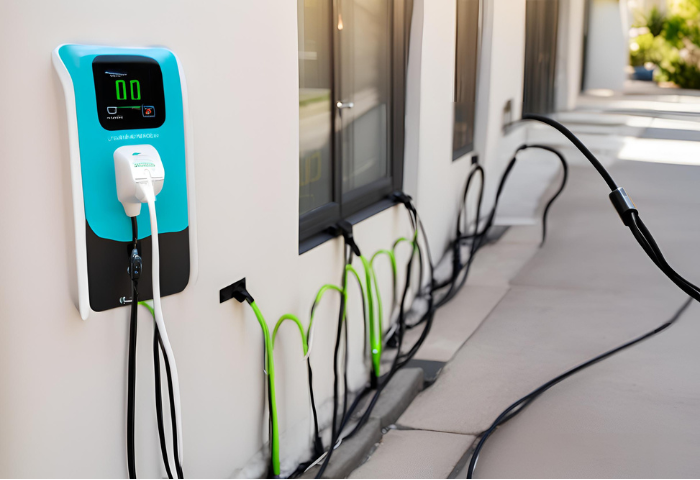
5.1 Factors Impacting Charging Time
Several factors can impact the charging time of electric vehicles (EVs). Here are three key factors to consider:
Battery Size: The size and capacity of the EV battery play a significant role in determining charging time. Larger battery packs require more energy to charge fully, resulting in longer charging times compared to smaller battery packs. EVs with higher energy storage capacities may take longer to charge, especially when using slower charging methods like Level 1 charging.
Charger Output: The output power of the charging equipment also influences charging time. Chargers with higher power outputs, such as Level 2 chargers or DC fast chargers, can deliver more energy to the EV’s battery in a shorter amount of time, resulting in faster charging rates. The power output of the charger, measured in kilowatts (kW), determines how quickly the EV battery can be replenished.
Ambient Temperature: Ambient temperature can affect charging efficiency and battery performance. Extreme temperatures, whether hot or cold, can impact the charging process and may result in longer charging times. High temperatures can lead to battery overheating and reduce charging efficiency, while low temperatures can slow down chemical reactions within the battery and decrease charging speed. EV owners should consider charging their vehicles in moderate temperature conditions to optimize charging performance.
5.2 Optimizing Charge Time for Electric Vehicles
To optimize charge time for electric vehicles (EVs), consider the following tips:
Charge During Off-Peak Hours: Take advantage of off-peak electricity rates by scheduling charging sessions during times of lower electricity demand. Many utility companies offer discounted rates for off-peak hours, making it more cost-effective to charge your EV during these times. By charging overnight or during off-peak periods, you can minimize charging costs and avoid putting additional strain on the electrical grid during peak hours.
Utilize Fast Charging: When possible, use fast charging options like Level 2 chargers or DC fast chargers to reduce charging time. These chargers offer higher power outputs and faster charging rates compared to standard Level 1 chargers, allowing you to replenish your EV’s battery more quickly. Fast charging is particularly beneficial for long-distance travel or when you need to top up your battery quickly.
Manage Battery Temperature: Keep your EV’s battery within the optimal temperature range for charging to maximize charging efficiency. Extreme temperatures can negatively impact charging performance and may result in longer charging times. If possible, park your EV in a shaded area or garage to avoid exposure to direct sunlight or extreme heat, especially during charging sessions.
Preconditioning: Preconditioning your EV’s battery before charging can help optimize charging efficiency and reduce charging times. Preconditioning involves heating or cooling the battery to the optimal temperature range for charging, which can improve charging performance and reduce the time required to charge the battery fully. Many EVs come equipped with preconditioning features that allow you to prepare the battery for charging remotely using a mobile app or vehicle settings.
6. Where to Buy a Portable Level 1 EV Charger
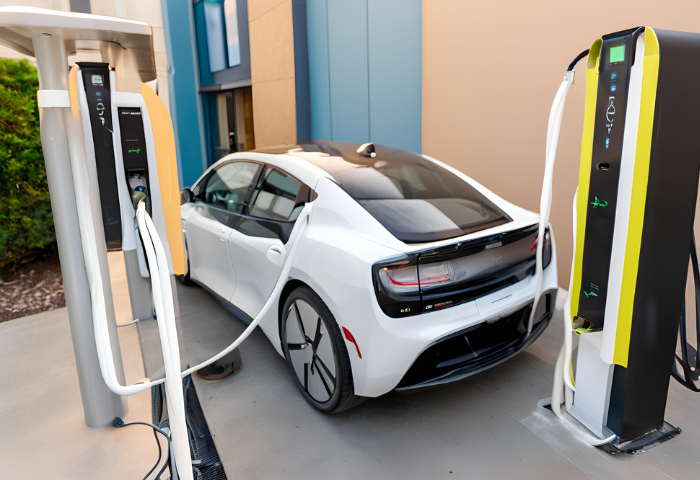
6.1 Choosing the Best Portable Level 1 EV Charger
When selecting a portable Level 1 EV charger, consider these key factors:
Charging Speed: While all Level 1 chargers are slow compared to higher levels, some models might offer slightly higher outputs (around 1.4 kW to 2 kW) compared to the standard range (1.3 kW to 2.4 kW). This can translate to marginally faster charging times.
Cable Length: A longer cable provides more flexibility in reaching outlets, especially in tight parking spaces or inconvenient locations.
Durability: Opt for a charger with a sturdy build quality and weatherproof design to withstand potential bumps and exposure to the elements during travel.
Safety Features: Ensure the charger has built-in safety features like overload protection and ground fault circuit interruption (GFCI) for safe and reliable charging.
Brand Reputation and Warranty: Choose a reputable brand that offers a solid warranty for peace of mind in case of any malfunctions.
6.2 Where to Buy Portable Level 1 EV Chargers
Portable Level 1 EV chargers can be conveniently purchased from various retailers:
Online Retailers: Major online retailers offer a wide selection of portable chargers from various brands, allowing you to compare features and prices easily.
Electronics Stores: Electronics stores often carry a selection of portable EV chargers, enabling you to see them in person and potentially get help from salespeople.
Auto Parts Stores: Many auto parts stores are expanding their EV product lines, and some might carry portable Level 1 chargers alongside other EV accessories.
Portable Level 1 EV chargers offer on-the-go charging flexibility for electric vehicle owners. Whether you lack home charging options, embark on road trips, or need emergency backup power, these chargers provide a convenient solution.
Remember, the ideal charger aligns with your individual needs and charging priorities. So, research different models and power up your electric adventures!

Henry Michael is a leading expert in EV charging station research, specializing in innovative solutions for electric vehicle infrastructure. With a passion for sustainability and technological advancement, he is dedicated to advancing the accessibility and efficiency of EV charging worldwide.

